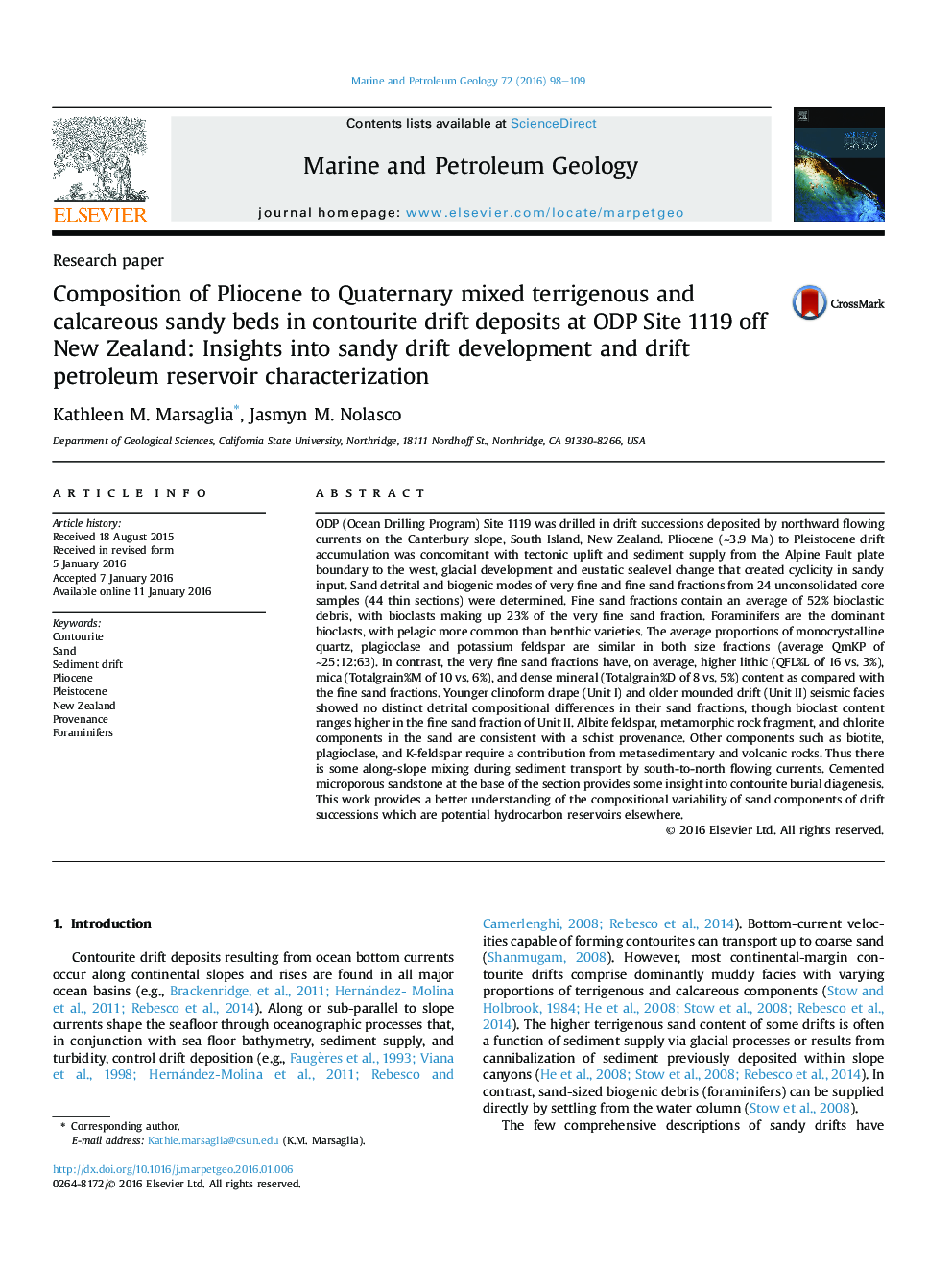| کد مقاله | کد نشریه | سال انتشار | مقاله انگلیسی | نسخه تمام متن |
|---|---|---|---|---|
| 6434478 | 1637155 | 2016 | 12 صفحه PDF | دانلود رایگان |

- ODP Site 1119 drift contains mixed carbonate-terrigenous sandy contourites.
- Sand compositions imply transport distances up to hundreds of km.
- Foraminifers are more abundant as fine sand and in the drift vs. drape facies.
- Lithic fragments, dense minerals and micas are more abundant as very fine sand.
- Reservoir potential negatively affected by sorting, bioturbation, and composition.
ODP (Ocean Drilling Program) Site 1119 was drilled in drift successions deposited by northward flowing currents on the Canterbury slope, South Island, New Zealand. Pliocene (â¼3.9Â Ma) to Pleistocene drift accumulation was concomitant with tectonic uplift and sediment supply from the Alpine Fault plate boundary to the west, glacial development and eustatic sealevel change that created cyclicity in sandy input. Sand detrital and biogenic modes of very fine and fine sand fractions from 24 unconsolidated core samples (44 thin sections) were determined. Fine sand fractions contain an average of 52% bioclastic debris, with bioclasts making up 23% of the very fine sand fraction. Foraminifers are the dominant bioclasts, with pelagic more common than benthic varieties. The average proportions of monocrystalline quartz, plagioclase and potassium feldspar are similar in both size fractions (average QmKP of â¼25:12:63). In contrast, the very fine sand fractions have, on average, higher lithic (QFL%L of 16 vs. 3%), mica (Totalgrain%M of 10 vs. 6%), and dense mineral (Totalgrain%D of 8 vs. 5%) content as compared with the fine sand fractions. Younger clinoform drape (Unit I) and older mounded drift (Unit II) seismic facies showed no distinct detrital compositional differences in their sand fractions, though bioclast content ranges higher in the fine sand fraction of Unit II. Albite feldspar, metamorphic rock fragment, and chlorite components in the sand are consistent with a schist provenance. Other components such as biotite, plagioclase, and K-feldspar require a contribution from metasedimentary and volcanic rocks. Thus there is some along-slope mixing during sediment transport by south-to-north flowing currents. Cemented microporous sandstone at the base of the section provides some insight into contourite burial diagenesis. This work provides a better understanding of the compositional variability of sand components of drift successions which are potential hydrocarbon reservoirs elsewhere.
Journal: Marine and Petroleum Geology - Volume 72, April 2016, Pages 98-109